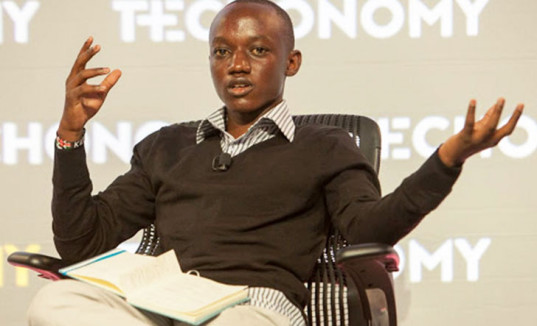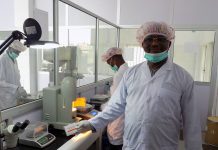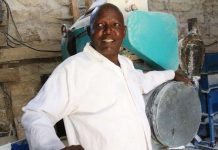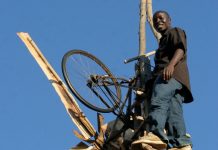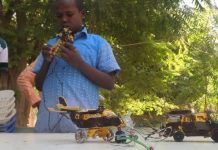(A column highlighting scientific, technological, engineering, and design innovation in Africa)
Seventeen-year-old Leroy Mwasaru of Kenya is one of the youngest people to produce biogas, a source of renewable energy. He developed a device to do just that after sewage from his high school’s pit latrines started leaking into a stream that was the local community’s only source of fresh water.
The sewage problem compounded the twin problems of forest erosion resulting from the school’s growing demand for firewood for cooking, and damage to the eyes of the school’s cooks caused by the smoke during cooking. Moreover, the school’s demand for timber provoked the ire of the local community, whose demand for firewood was supplied by the same forest.
Built in 1906 in western Kenya, the school, Maseno School, is the oldest in Kenya. Mwasaru calculated that his school used 28 trucks of wood, or 196 metric tons, per term to create enough energy to cook for all the students. With four of his school buddies, he set to work on a prototype that would turn human waste into gas, which in turn would be used to power stoves at the school. He deduced that if each of the school’s 1,3000 students produced 200 grams of human waste per day, his bioreactor system could save the school $42,000 a year in cooking gas purchases.
Instead of human waste, the team chose to use cow dung from the school farm and food refuse after meals during the prototype phase. They put the mixture of dung and organic kitchen waste, along with water, into a plastic digester purchased with funds donated by Innovate Kenya, a nonprofit that supports high schools students working to solve pressing problems in their local communities.
The digester produced the biogas, which was then carried by pipe through the kitchen to the gas-powered stove.
Mwasaru says he is still working on “the most cost-effective” and “energy efficient” way to use human waste, since urine mixed with solid waste breaks down the biogases. To this end, they designed a toilet that separates solid and liquid waste, which they hope to build soon with the help of iHub Kenya.
Mwasaru’s bioreactor was a finalist in the 2013 Innovate Kenya competition and was presented at the Techonomy 2014 conference in California, where Mwasaru gained more ideas to develop and refine the design. He anticipates that the final version will cost about 7 million Kenyan Shillings (US$85,000) to build and install. Eventually he will turn the project into its own company, he says.
Mwasaru and his five-member team join the continent’s growing army of teenage STEMpreneurs. In Nigeria, for example, three teenage girls created a urine-powered generator that provides six hours of electricity.



